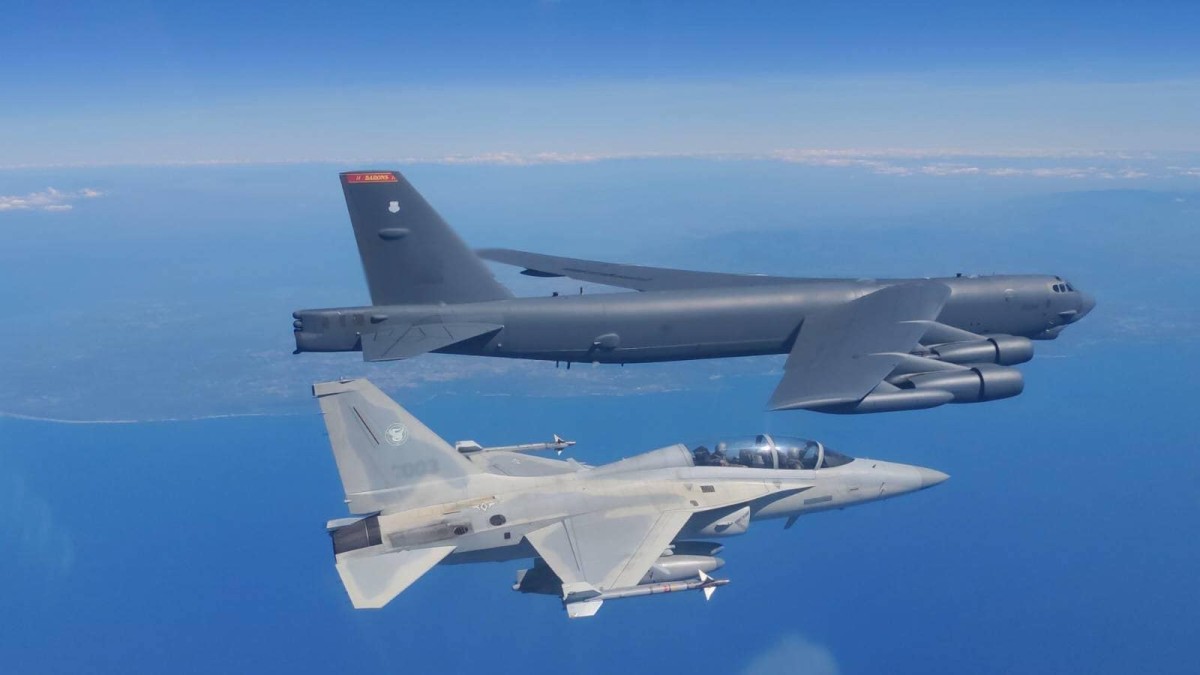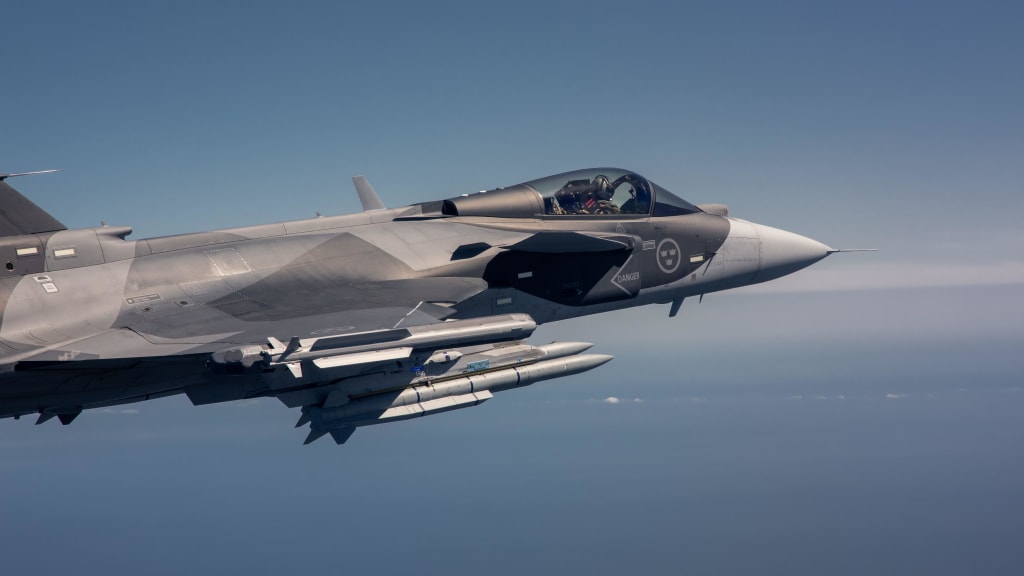Thailand has been contemplating the acquisition of a new fourth-generation fighter aircraft, with the Boeing F-16 and SAAB Gripen emerging as front-runners. A third contender has now entered the fray, expanding Bangkok’s options.
Buoyed by the export success of its aircraft, South Korean contractor Korea Aerospace Industries (KAI) has proposed to sell its FA-50 light fighter aircraft to the Royal Thai Air Force (RTAF), which is on the lookout for a new combat aircraft from fiscal year (FY) 2025.
As per reports, the proposal from KAI is in response to an informal request for proposals (RFP) that the RTAF sent out in the second half of 2023. Additionally, the RTAF outlined a proposal in its 2024 White Paper to replace the 102 Squadron’s aging Lockheed Martin F-16A/Bs with 12-14 fighter aircraft between FY 2025 and FY 2034.
The Thai cabinet was scheduled to receive the RTAF’s strategy for purchasing aircraft on April 2. On April 3, however, Janes was informed by an RTAF source that the Thai government had rejected the RTAF’s suggested funding request. According to the source, “the Air Force will try again in May.”
According to reports in local media, KAI CEO Kang Goo-young pitched a proposal for the FA-50 to Thai Defense Minister Sutin Klungsang during his recent visit to South Korea. The RTAF already operates the KAI T-50 Golden Eagle, a supersonic advanced jet trainer and light combat aircraft.
Making a case for the FA-50 fighters, Kang Goo-young emphasized that KAI’s FA-50 was a multirole fighter that could match the US-made F-16’s air capabilities for half the price and with less maintenance. Incidentally, this has been the rationale cited by the South Korean contractor to all prospective buyers.
Additionally, customers have been particularly appeased by the timely delivery of the South Korean fighter jets. For instance, just over ten months after Poland signed an agreement for the FA-50 with KAI, the first two aircraft were handed over to Polish authorities. Poland, for one, is believed to have chosen the FA-50 over upgraded F-16s as the latter would take a very long time to arrive.
The FA-50, designed as a lightweight combat version of the Korea Aerospace Industries’ T-50 Golden Eagle supersonic trainer aircraft, has become a massive hit in the export market. In recent times, KAI has secured big orders for the FA-50 from Poland and Malaysia, adding more weight to the aircraft’s reputation.
According to information on KAI’s website, the FA-50 aircraft has been enhanced based on the excellent performance of the T-50 trainer, incorporating features such as Tactical Data Link, Precision Guided Munitions, and Self Protection subsystems.
The upgraded version boasts of flight performance on par with fighter jets and has been actively deployed and used by the Republic of Korea Air Force (ROKAF) since 2013.
Developed to meet the demands of air forces worldwide for a lightweight fighter, the FA-50 has a sophisticated radar system that gives it detection capabilities similar to the KF-16 fighter, which is an American F-16 made under license. However, since the RTAF was earlier inclined to buy the fifth-generation F-35 Lightning II aircraft, it is not clear whether it would settle for a light attack aircraft.
At the same time, the Royal Thai Air Force (RTAF) chief, Air Chief Marshal Phanpakdee Pattanakul, had also asserted that the RTAF would need to replace obsolete aircraft and maintain its fighter strength to facilitate training and operations and keep up with the number of fighters maintained by the kingdom’s neighbors. It might work to KAI’s advantage that the Philippines and Malaysia have purchased the FA-50.
Additionally, the FA-50 is cheaper than its rivals and other aircraft of the same category. This may fit the bill for a country that has been facing a significant cash crunch. The FA-50 may have, thus, entered the contest alongside two very combat-capable jets: the F-16s and the Gripens, making it a three-way contest.
Fighter Jet Acquisition By The RTAF
In November 2022, the service announced that it had placed a request with the United States to acquire two F-35A fighter jets, the smallest order request in history. However, by the summer of last year, the US had rejected the request on the rationale that the Thai air force might not be adequately prepared in terms of infrastructure facilities to accommodate F-35 fighters.
While the lid on the aspirational F-35 was closed, the RTAF has been firm about bolstering its air power by acquiring potent fighter jets. Currently, the Thai Air Force operates separate fleets of the Swedish JAS-39 Gripens and the American F-16 Fighting Falcons.
The Thai Air Force, which currently has seven squadrons, intends to decommission three of its fighter squadrons, each with 12 aircraft, because the age of these planes makes their operation unfeasible and costly for the nation.

The US offered Thailand the F-16 Block 70 while rejecting its request for the F-35. The F-16 Block 70/72, also known as the Viper, is the most sophisticated and sought-after variant of the fighter aircraft.
On the other hand, Swedish manufacturer Saab has now offered its most advanced Gripen-E to help the RTAF replace its outdated and unviable F-16s after losing to the Lockheed Martin F-35 in various contracts throughout Europe.
Experts believe that the two fighters considered the best in their generation globally, will compete at a breakneck pace. However, the Swedish Gripen-E has also secured the backing of the United Kingdom for the RTAF contract.
The Swedish manufacturer wrote on Platform X, “Sweden and the UK stand side-by-side in offering the very best future fighter capability for the Royal Thai Air Force.”

After UK Secretary of State for Foreign, Commonwealth, and Development Affairs David Cameron shared a photo of himself on the same day, boarding a Royal Thai Air Force (RTAF) Gripen C while on a trade visit, Saab stated that Sweden and the UK would work together to sell the Gripen E to the Southeast Asian country.
“Thailand is one of the biggest economies in Southeast Asia,” Cameron stated about the UK’s support of Saab’s application. The value of trade with [the UK] is approximately GBP6 billion [USD7.62 billion] annually. I wish to expand upon that. Together, we can advance jobs, growth, and security throughout the area and in the UK.
The British support for the Gripen last month gave an impression that the aircraft could make it from the others in the RTAF’s choice. However, with the FA-50 now entering this closely fought contest, the RTAF might have to take a step back and start its evaluation again.
- Contact the author at sakshi.tiwari9555 (at) gmail.com
- Follow EurAsian Times on Google News




